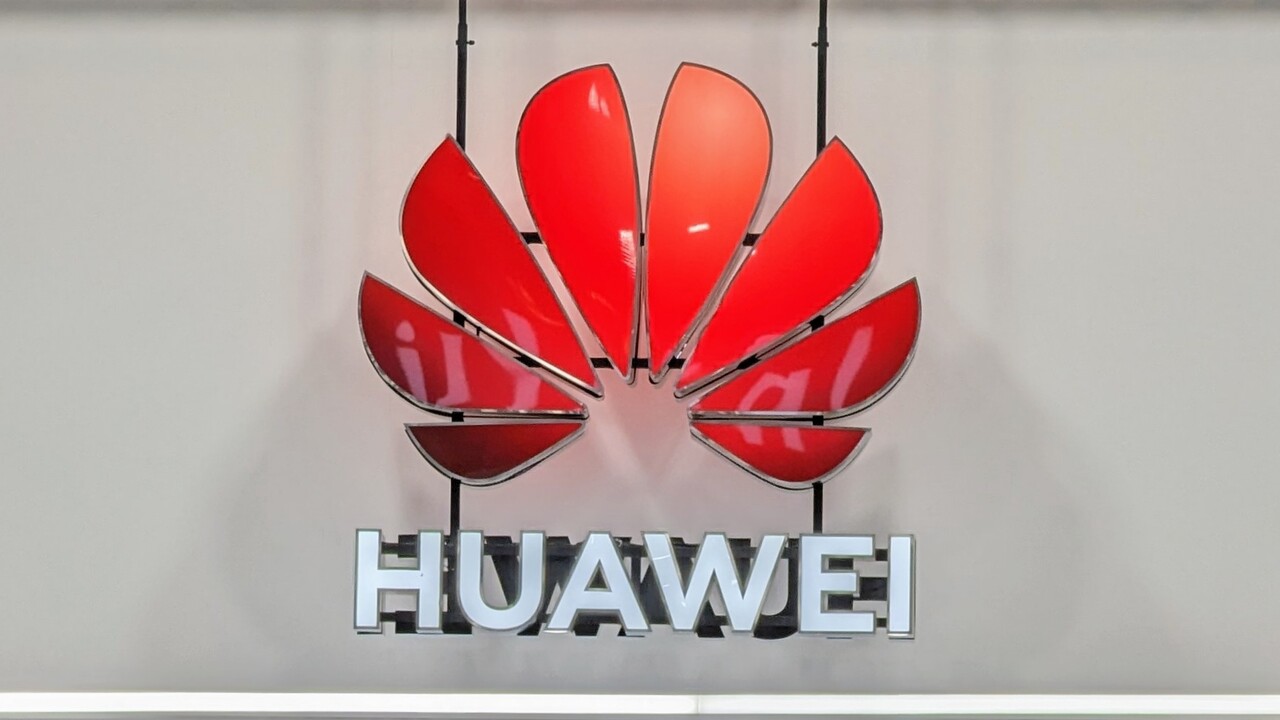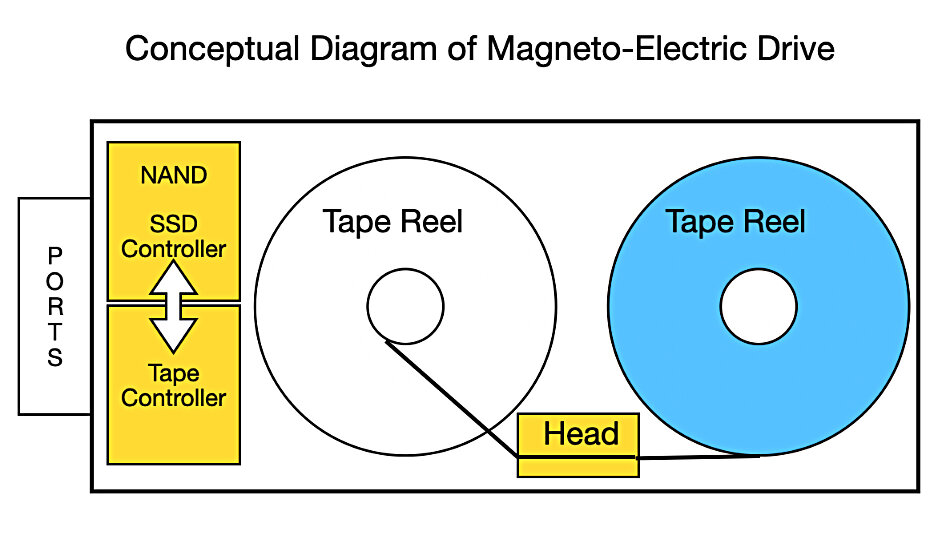Magneto-electric disk: Huawei develops strip SSD hybrid disks 41 comments

Huawei is developing the so-called magneto-electric disk as a new type of archive storage. The HDD alternative houses a tape storage unit with an engine and combines it with an SSD. The first generation would store 72TB in a 7-inch case and require much less power than a hard drive.
As the Blocks and Files website says, the concept of the magneto-electric disk (MED) was born out of necessity. Huawei wants to use this technology to prepare for an emergency situation in the event of bottlenecks in the supply of conventional hard drives due to restrictions on US exports to China.
The concept is illustrated by a diagram. The tape storage is divided into two reels driven by a motor. The read/write unit is also integrated. Unlike traditional tape storage, no additional drives are required for reading and writing.
 The principle of the Magneto-Electric Disk (MED) is illustrated (Image: Blocks & Files)
The principle of the Magneto-Electric Disk (MED) is illustrated (Image: Blocks & Files)
To speed up the data flow, an SSD is also used, which first records new data at high speed and then writes it to the tape in large sequential blocks. However, “hot” data used more frequently should still be available on the SSD so that it can be read quickly. Only “cold” data should be archived on the slow tape.
Key data on the 1st generation MED
A first-generation MED is claimed to store 72TB of data in the said 7-inch case, although it is not specified whether this applies to compressed data or not and whether the SSD storage volume is included. Power requirements should only be about a tenth of a hard drive. A rack of MEDs is expected to hold more than 10 petabytes of data and require less than 2,000 watts, the report says. An illustration shows 71 watts per petabyte, which would mean only 710 watts per 10 petabytes. Together, the drives are expected to achieve a data throughput of 8 GB/s per rack.
 Huawei OceanStor Arctic: A rack with MEDs should be more efficient than with hard drives (Image: Blocks and files)
Huawei OceanStor Arctic: A rack with MEDs should be more efficient than with hard drives (Image: Blocks and files)
The first generation of the MED is expected to be ready for use in 2025. The second generation is planned for 2026 or 2027, which will fit into a 3.5-inch package with a shorter magnetic strip.
Memories of “Tape Embedded Drive”
Hard drive manufacturer Western Digital also had the concept of a drive combining tape storage and the necessary read/write unit. The so-called onboard tape player with two motorized reels has been described in various patents. However, no SSD has been integrated into it, which distinguishes the concept from that of Huawei.
Topics: Tape Storage Flash Storage Huawei Storage Technologies SSD Storage Source: Blocks and Files

Alice guides you through the best storage solutions, from ultra-fast SSDs to secure cloud options.

